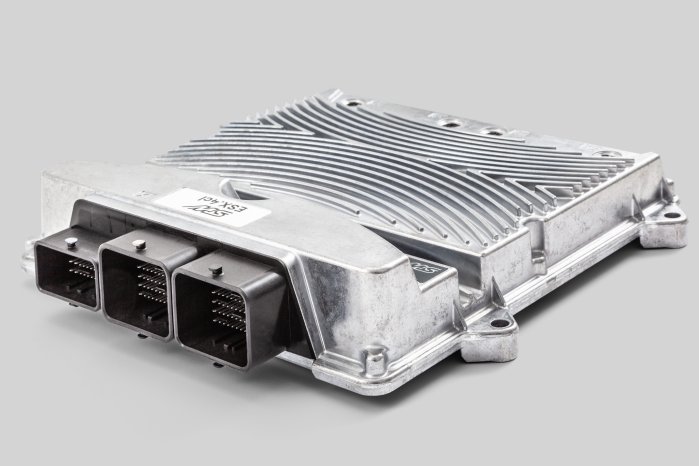Both the ESX.4cl and the ESX.4cm-a are freely programmable compact control units in die-cast aluminum housings. Both are suitable for use in confined spaces and under the most adverse conditions. The control units are based on a common platform that utilizes the 32-bit Aurix three-core processor with 300 MHz and four CAN interfaces. Like all STW controllers based on the Aurix platform, these two control units are both certified for functional safety level SIL 2 / PL d.
While the ESX.4cm-a has one Ethernet switch, the ESX.4cl comes with two. The larger controller, ESX.4cl, has six Ethernet interfaces, with one port specified to 1Gbit/s for high data rates. The managed switches relieve the main processor, and no computing power is required from the processor for switching functions. The ESX.4cl has a total of 113 inputs and outputs, with 53 outputs, low-side and high-side, and 60 multifunction inputs.
The ESX.4cm-a offers machine manufacturers two 100 Mbit/s Ethernet and two BroadR Reach ports. 34 freely configurable multifunction inputs and 29 outputs, low-side and high-side, offer maximum flexibility for connecting additional sensors and actuators. Both control units support SENT and LIN and provide supply voltages from 5 to 12 V for connected sensors.
What fundamentally differentiates the control units is the i.MX 6 coprocessor option for the ESX.4cl. The i.MX 6 provides outstanding computing power for more demanding applications, and brings more connectivity to the control system with extensive protocol and interface flexibility, and additional networking features for complex control architectures.
Applications can be conceptualized and implemented intuitively and flexibly with the STW open source software toolchain openSYDE. With numerous pre-installed widgets in openSYDE, CAN and Ethernet data can be displayed graphically and are readily available for use on HMIs or in cloud solutions. Numerous convenient functions such as current control and output ramps, and frequency averaging for inputs are already integrated. Additional libraries including CANopen*, J1939* or ISObus* are available to simplify system integration. An 8 MB flash memory, 2 MB RAM and a 32 kB EEPROM are available for customer applications. Large tables or cyclically recorded data can be processed and selectively stored to either an external 128 Mbit flash memory or a 512 kbit FRAM.
With these features, manufacturers of innovative mobile machinery are ideally positioned to meet the coming challenges in construction, agriculture, forestry and municipal technology.
*scheduled features


